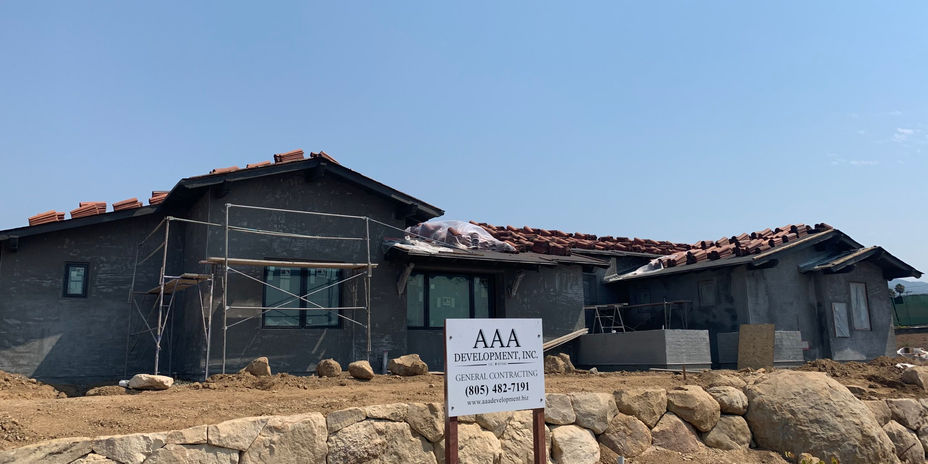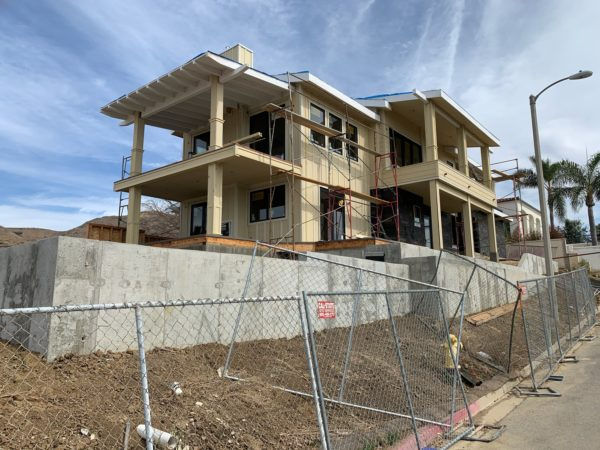Natural Disaster Reconstruction
Recovery Support
We have been dedicated to the community for 25+ years providing support, aid and guidance on rebuilding stronger. We will be maintaining this page as a resource for the Ventura, Santa Barbara and Los Angeles Counties. for residents and businesses threatened by fire and other natural disasters.
Our hearts go out to all those impacted by such events and to our brave first responders who work tirelessly to protect our neighborhoods.
Wildfire recovery resources
If you’ve been evacuated or impacted by wildfire or natural disaster, access critical information or support here.
Online resources for repairs
Red Cross checking your home after a fire
Red Cross cleaning up after a fire
Tips on smoke removal and fire cleanup
Federal organizations
EPA Dealing with Debris and Damaged Buildings
Tips on smoke removal and fire cleanup
Government disaster assistance recovery resources
California
University of California - Recovering from Wildfire
University of California - A Homeowner's Guide to Recovering from a Wildfire
California Wildfires Statewide Recovery Resources
California Wildfires Statewide Recovery Resources - Housing
Online resources for rebuilding
Federal organizations
FEMA Fact Sheet - Flood After Fire: The Increased Risk
California
California Wildfires Statewide Recovery Rebuilding Resource
Note: After a wildfire, the flood risk increases significantly. Normally, rainfall is absorbed by vegetation and soils, reducing runoff. However, wildfires remove vegetation and may leave soil unable to absorb water, creating flash flood conditions. Flood risk remains significantly higher until vegetation is restored—up to five years after a wildfire. Residents and business owners need to protect their homes and assets from the devastating financial losses from a flood, especially after a wildfire, before the next weather event occurs.
General
Home Rehabilitation Inspection Guide
Reopening your building after a wildfire
Safer, Stronger, Protected Homes and Communities
Wildfire research fast sheets and resilience materials
Fire insurance policies and financial resources
US Small Business Association Disaster Loan Assistance
USDA Disaster Assistance Programs
IRS Disaster Assistance and Emergency Relief for Individuals and Businesses
HUD Mortgage Insurance for Disaster Victims Section 203(h)
Personal health and safety
General
Firewise Tips for High Fire Danger Days
Federal Alliance for Safe Homes Fire Safety
Red Cross
Red Cross Wildfire Safety Checklist
National
National Fire Protection Association Wildfire Safety Tips
US Disaster Assistance Guide for moving forward after a disaster
US Disaster Assistance Guide for moving forward after a disaster
CDC
CDC Prevent Illness and Injury After a Disaster
CDC's Eight Tips for Protecting Yourself from Breathing Wildfire Smoke
FEMA
FEMA's recommended items to include in a Basic Emergency Supply Kit
Personal safety tips from the AIA Disaster Assistance Committee:
If you live in a fire prone area
The National Weather Service issues Red Flag Warnings meaning warm temperatures, very low humidities, and stronger winds are expected to combine to produce an increased risk of fire danger. Pay close attention to these warnings and during these times especially:
-
If you are allowed to burn in your area, all burn barrels must be covered with a weighted metal cover, with holes no larger than 3/4 of an inch.
-
Do not throw cigarettes or matches out of a moving vehicle. They may ignite dry grass on the side of the road and become a wildfire.
-
Extinguish all outdoor fires properly. Drown fires with plenty of water and stir to make sure everything is cold to the touch. Dunk charcoal in water until cold. Do not throw live charcoal on the ground and leave it.
-
Never leave a fire unattended. Sparks or embers can blow into leaves or grass, ignite a fire, and quickly spread.
During the time a wildfire is in your area
Fire weather watch = dangerous fire weather conditions are possible over the next 12 to 72 hours
-
Stay aware of the latest news and updates from your local media and fire department. Get your family, home and pets prepared to evacuate. Have two evacuation routes pre-planned in case one is blocked.
-
Place your emergency supply kit and other valuables in your vehicle.
-
Move patio or deck furniture, cushions, door mats and potted plants in wooden containers either indoors or as far away from the home, shed and garage as possible.
-
Close and protect your home’s openings, including attic and basement doors and vents, windows, garage doors and pet doors to prevent embers from penetrating your home.
-
Fireplace flue boxes need to be closed. Eave attic and underfloor vents must be covered. Ensure all windows are closed and locked to prevent opening.
-
Connect garden hoses and fill any pools, hot tubs, garbage cans, tubs, or other large containers with water. Firefighters have been known to use the hoses to put out fires on rooftops.
-
If you see a wildfire and haven't received evacuation orders yet, call 911. Don't assume that someone else has already called.
-
Leave as early as possible, before you’re told to evacuate. Do not linger once evacuation orders have been given. Promptly leaving your home and neighborhood clears roads for firefighters to get equipment in place to fight the fire, and helps ensure residents’ safety.
-
Decide on a pre-established meeting location and out of area contact person in case of separation.
-
Stay tuned to local media, verified social media and emergency notification systems.
After a wildfire has been contained
-
Continue to listen to news updates for information about the fire. Return home only when authorities say it is safe.
-
Visit FEMA/Ready.gov for more information regarding wildfire after an emergency.
Returning home and recovering after a wildfire
-
Do not enter your home until fire officials say it is safe.
-
For several hours after the fire, maintain a "fire watch." Check and re-check for smoke, sparks or hidden embers throughout the house, including the roof and the attic.
-
Use caution when entering burned areas as hazards may still exist, including hot spots, which can flare up without warning.
-
Avoid damaged or fallen power lines, poles and downed wires.
-
Watch for ash pits and mark them for safety—warn family and neighbors to keep clear of the pits also.
-
Watch animals closely and keep them under your direct control. Hidden embers and hot spots could burn your pets’ paws or hooves.
-
Follow public health guidance on safe cleanup of fire ash and safe use of masks.
-
Wet debris down to minimize breathing dust particles.
-
Wear leather gloves and heavy soled shoes to protect hands and feet.
-
Cleaning products, paint, batteries and damaged fuel containers need to be disposed of properly to avoid risk.
As you rebuild with AAA Development, Inc
-
Obtain information from local authorities about defensible space requirements.
-
Clear 30 feet of space around your home of vegetation.
-
Store firewood at least 30 feet away from your home.
-
Clear debris off the roof, out of the gutters and away from air conditioning units.
-
Plant fire-resistant shrubs and trees. Hardwood trees, for example, are less flammable than pine, evergreen, eucalyptus or fir trees.
-
Use vegetation that is resistant to fire, and is found naturally in the area. Do not import vegetation.
-
Equip chimneys and stovepipes with a spark arrester that meets the requirements of NFPA 211, a specific standard for chimney fire safety.
-
Install 1/2-inch mesh screen beneath porches, decks, floor areas and the home itself. Also, screen openings to your floors, roof and attic.
Ask AAA Development, Inc to
-
Select and install fire-resistant roofing, siding and other building materials.
-
Install or develop an adequate outside water source such as a small pond, cistern, well, swimming pool or hydrant.
-
Install freeze-proof exterior water outlets on at least two sides of the home and near other structures on the property. Install additional outlets at least 50 feet from the home.









